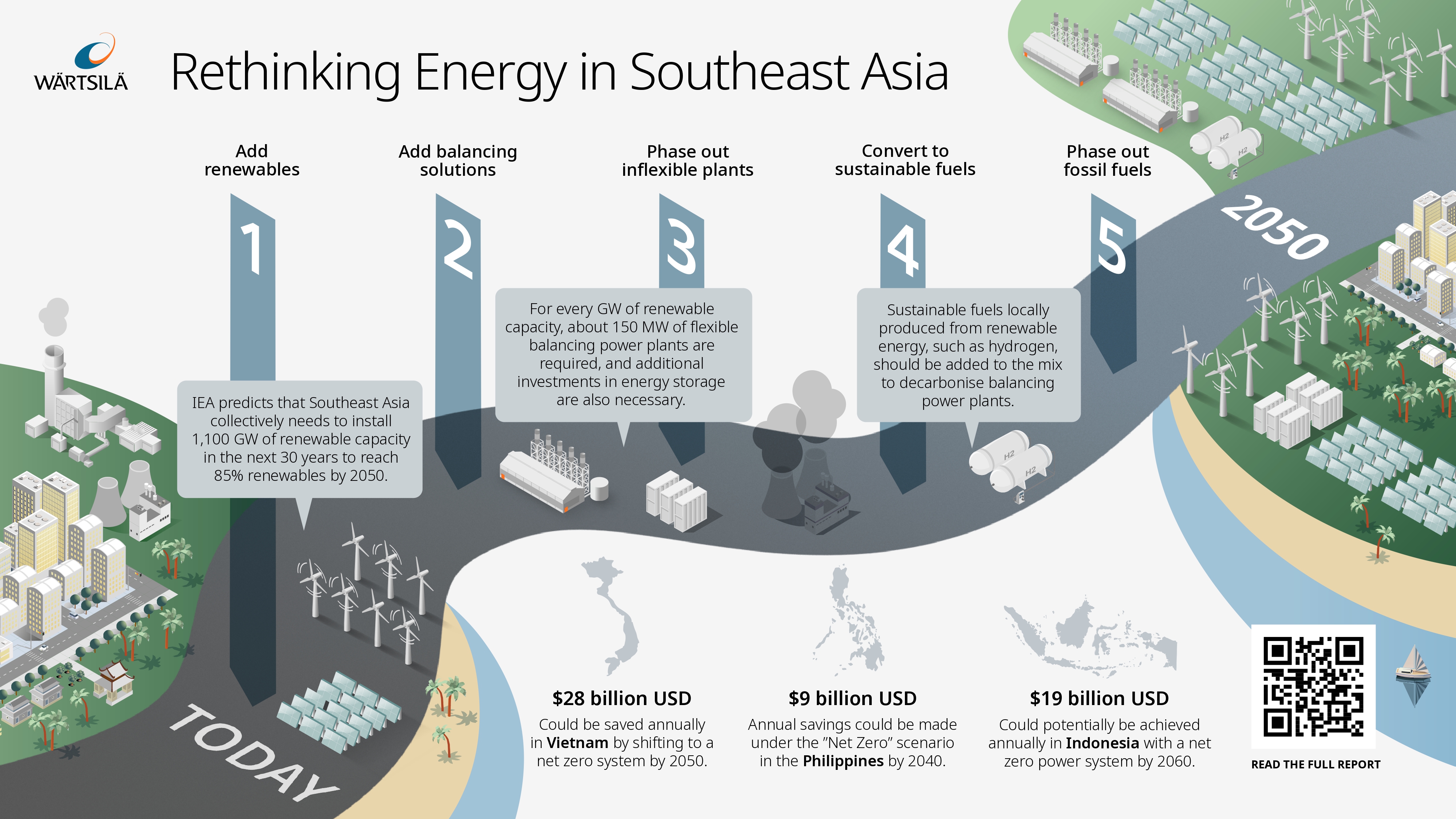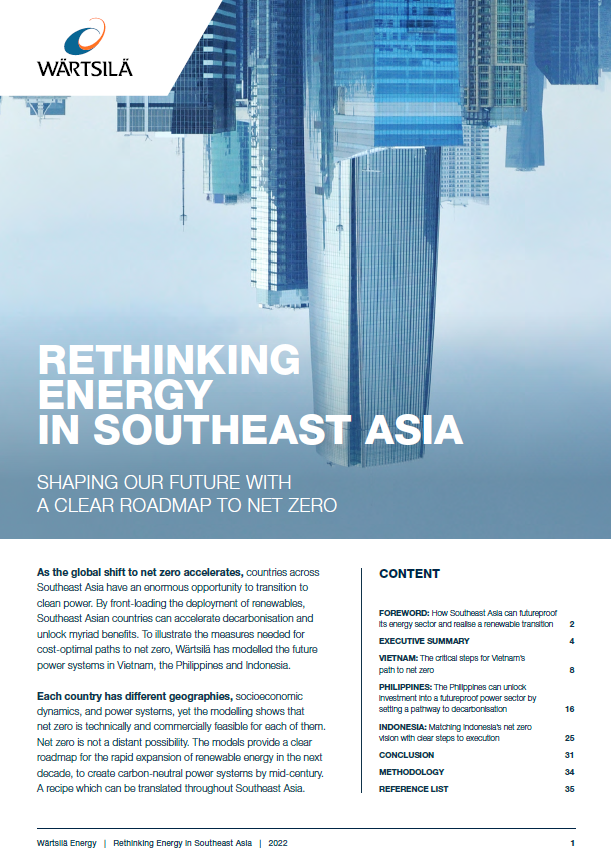

It's time to #ShapeOurFuture with a clear roadmap to net zero
The Rethinking Energy in Southeast Asia series discusses key global and local factors that shape the energy sector. Driven by national energy strategies, falling installation costs of renewables, and public pressure against fossil fuels, countries in the region are gradually transforming their fossil fuel-based power generation fleets into more sustainable and diversified energy supply portfolios.
Learn more about the global energy transition and its impact on energy markets across Southeast Asia, and deep dive into the role of flexibility in high-renewable power systems in this new report.
Shape our future in

If we act now, we can avoid locking ourselves into inflexible legacy technologies and instead build the optimal foundations for future Net Zero systems.
Press Release
Wärtsilä’s report shows: Southeast Asian countries can smoothly transition to net zero by mid-century, slashing emissions and the carbon tax cost burden
Wärtsilä Corporation, Press release, 14 September 2022 at 05:00 UTC+2







